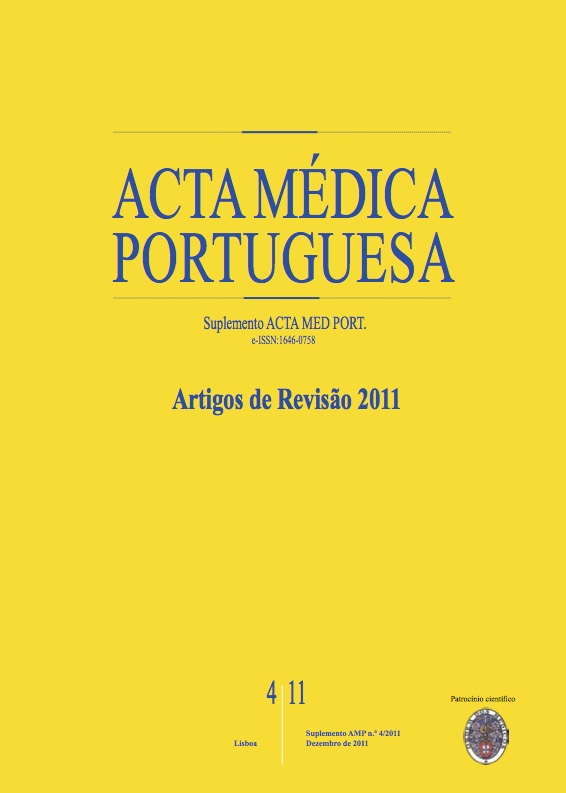Avaliação da viabilidade miocárdica.
DOI:
https://doi.org/10.20344/amp.1568Resumo
The prognosis for patients with chronic coronary artery disease and severe left ventricular dysfunction is poor, despite advances in different therapies. The assessment of myocardial viability has become an important aspect of the diagnosis, prognosis and management of patients with ischemic cardiomyopathy. Patients with left ventricular dysfunction, with a substantial amount of severely ischemic myocardium are at highest risk, and are likely to benefit from coronary revascularization. Patients with predominantly scar tissue should be treated medically. Multiple imaging techniques have been developed to assess viable and nonviable myocardium by evaluating perfusion, cell membrane integrity, glucose metabolism, fibrosis and contractile reserve. PET FDG-F18, myocardial perfusion scintigraphy (with (201)Tl and (99m)Tc), dobutamine stress echocardiography and more recently magnetic resonance have been extensively evaluated for assessment of viability and prediction of clinical outcome after coronary revascularization. In general, nuclear imaging techniques have a higher sensitivity for the detection of viability, whereas techniques evaluating contractile reserve have higher specificity (with lower sensitivity). Magnetic resonance has a high diagnostic accuracy for assessment of the transmural extent of myocardial scar tissue. The aim of this article is to review the role of Nuclear Medicine in assessing myocardial viability and risk stratification in patients with advanced left ventricular dysfunction, and to compare it with other imaging modalities.Downloads
Downloads
Como Citar
Edição
Secção
Licença
Todos os artigos publicados na AMP são de acesso aberto e cumprem os requisitos das agências de financiamento ou instituições académicas. Relativamente à utilização por terceiros a AMP rege-se pelos termos da licença Creative Commons ‘Atribuição – Uso Não-Comercial – (CC-BY-NC)’.
É da responsabilidade do autor obter permissão para reproduzir figuras, tabelas, etc., de outras publicações. Após a aceitação de um artigo, os autores serão convidados a preencher uma “Declaração de Responsabilidade Autoral e Partilha de Direitos de Autor “(http://www.actamedicaportuguesa.com/info/AMP-NormasPublicacao.pdf) e a “Declaração de Potenciais Conflitos de Interesse” (http://www.icmje.org/conflicts-of-interest) do ICMJE. Será enviado um e-mail ao autor correspondente, confirmando a receção do manuscrito.
Após a publicação, os autores ficam autorizados a disponibilizar os seus artigos em repositórios das suas instituições de origem, desde que mencionem sempre onde foram publicados e de acordo com a licença Creative Commons









